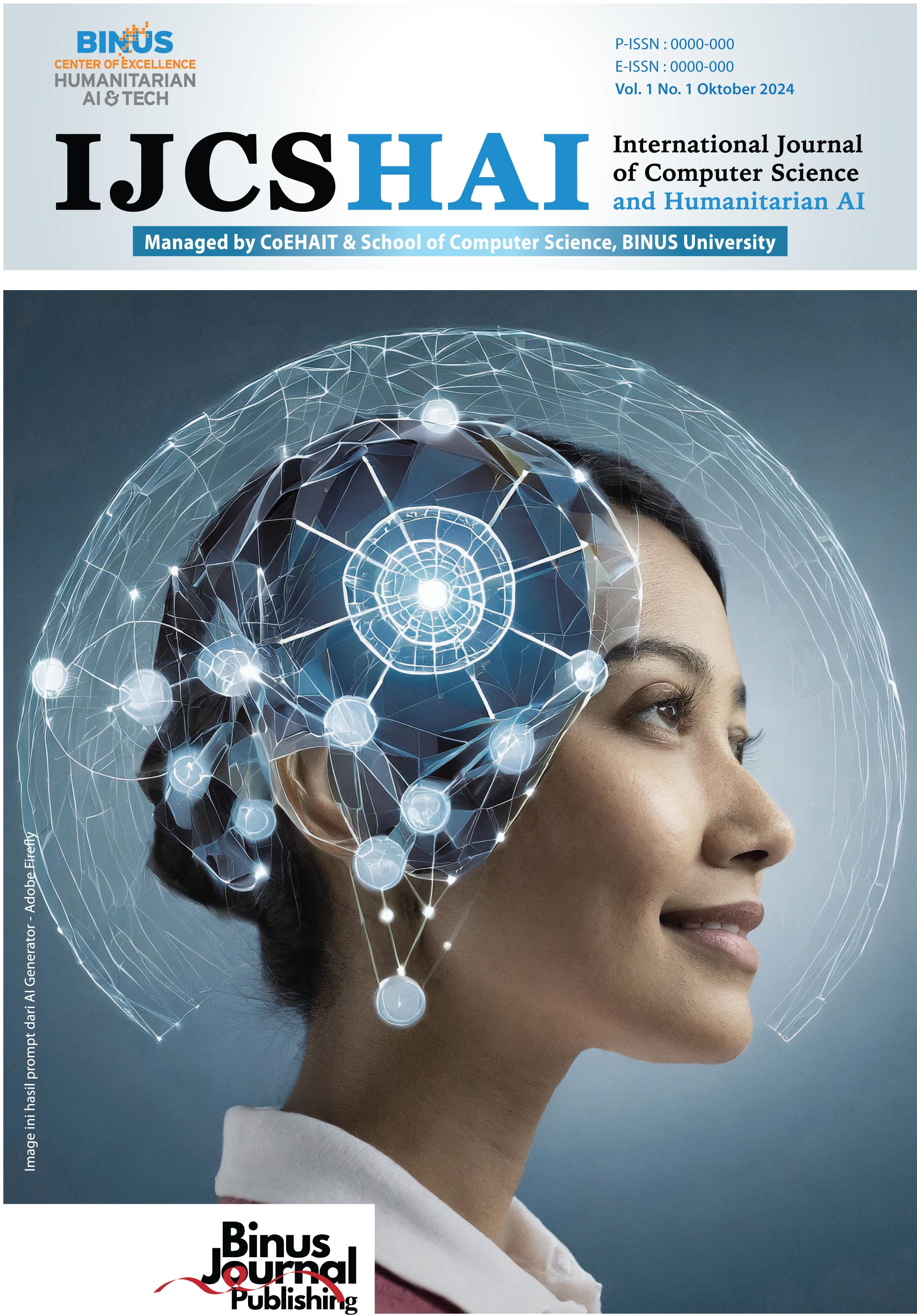Implementation of IoT Edge Computing for Control and Monitoring System of Hydroponic Plant Water Quality Using Raspberry Pi
DOI:
https://doi.org/10.21512/ijcshai.v1i1.12153Keywords:
Remote control and monitoring, Automatic Control, Internet of Things, Edge computing, Cloud-Based System, Hydroponic water qualityAbstract
Hydroponics involves cultivating plants using a water-based medium mixed with mineral nutrients, continuously supplied to the roots 24/7. Factors such as water reserve height, temperature, nutrient content, and pH are crucial considerations in hydroponic farming. Connectivity issues to the internet-based cloud system can disrupt the monitoring and control system. To ensure the effective operation of the hydroponic plant control and monitoring system, IoT edge computing within the Local Area Network is necessary as an extension of the cloud system. Periodically, the system will transmit calculation results from water quality sensors to the cloud-based system through IoT edge computing, enabling decision-making within the Local Area Network and subsequent transmission to Internet of Things devices within the hydroponic system for optimal plant growth.
References
G. Rajaseger, “Hydroponics: current trends in sustainable crop production,†Bioinformation, 19(9), 925–938, 2023, doi:10.6026/97320630019925.
A. Grigas, A. KemzÅ«raitÄ—, D. SteponaviÄius, “Hydroponic Devices for Green Fodder Production: a Review,†Rural Development 2019, 2019(1), 21–27, 2020, doi:10.15544/rd.2019.003.
Espressif Systems, ESP32, 2023.
R. Teja, Getting Started with ESP32 | Introduction to ESP32, Electronics Hub, 2021.
Espressif Systems, Esp32Â WroomÂ32 Datasheet, Espressif, 2023.
Maxim integrated, “DS18B20 Programmable Resolution 1,†92, 1–20, 2019.
T. Scherer, M. Meehan, “Using Electrical Conductivity and Total Dissolved Solids Meters to Field Test Water Quality,†North Dakota State University, (July), 1–2, 2019.
E. Upton, G. Halfacree, Raspberry Pi User Guide, 4th ed., Wiley, 2016.
S. Moellering, Collecting data from edge devices using Kubernetes and AWS IoT Greengrass V2, Amazon Web Services, Inc., 2021.
AWS, What is AWS IoT?, Amazon Web Services, Inc., 2022.
AWS, AWS IoT Core Features, Amazon Web Services, Inc., 2022.
AWS, AWS IoT Core policy actions, Amazon Web Services, Inc., 2022.
C. Lukito, R.B. Lukito, E. Ernawati, “Development of Water Quality Control and Monitoring System for Hydroponic Plants with a Cloud-Based System,†Journal of Computer Science, 20(6), 658–669, 2024, doi:10.3844/jcssp.2024.658.669.
R.S. Pressman, Software Engineering: A Practitioner’s Approach, 7th ed., The McGraw-Hill, New York, 2014, doi:10.1002/9781118830208.
AWS, What is AWS Lambda?, Amazon Web Services, Inc., 2023.
Downloads
Published
How to Cite
Issue
Section
License
Copyright (c) 2024 Cahya Lukito; Rony Baskoro Lukito; Endang Ernawati

This work is licensed under a Creative Commons Attribution-ShareAlike 4.0 International License.
Authors who publish with this journal agree to the following terms:
- Authors retain copyright and grant the journal right of first publication with the work simultaneously licensed under a Creative Commons Attribution License - Share Alike that allows others to share the work with an acknowledgment of the work's authorship and initial publication in this journal.
- Authors are able to enter into separate, additional contractual arrangements for the non-exclusive distribution of the journal's published version of the work (e.g., post it to an institutional repository or publish it in a book), with an acknowledgment of its initial publication in this journal.
- Authors are permitted and encouraged to post their work online (e.g., in institutional repositories or on their website) prior to and during the submission process, as it can lead to productive exchanges, as well as earlier and greater citation of published work.
USER RIGHTS
All articles published Open Access will be immediately and permanently free for everyone to read and download. We are continuously working with our author communities to select the best choice of license options, currently being defined for this journal as follows: Creative Commons Attribution-Share Alike (CC BY-SA)





